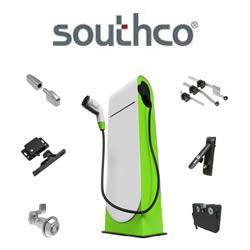LEED for Homes will attempt to provide national consistency in defining the features of a green home, and will enable builders anywhere in the country to obtain a ‘green' rating for their homes.
USGBC Pilot Testing a Rating System for "Green" Homes
Taryn Holowka | U.S. Green Building Council
| LEED for Homes will attempt to provide national consistency in defining the features of a green home, and will enable builders anywhere in the country to obtain a 'green' rating for their homes. |
| USGBC Pilot Testing a Rating System for "Green" Homes |
| By Taryn Holowka, LEED-AP, U.S. Green Building Council |
|
Summer is right around the corner and utility bills are expected to spike along with the thermometer. Home owners will blast their air conditioners in an attempt to thwart the hot sun...but instead of working against the sun, why not work with it? Simple green building strategies and technologies-like siting your home to take advantage of natural shading and daylight-can dramatically reduce power and water bills, while also creating a comfortable and healthy indoor atmosphere. The U.S. Green Building Council (USGBC) has developed a rating system, LEED® (Leadership in Energy & Environmental Design) for Homes that is a system of money, time and resource saving strategies to help homes become "green" or environmentally and resource friendly.
Currently in pilot test, the LEED for Homes rating system has been modeled after the USGBC's highly successful LEED for New Construction Rating System (LEED-NC), which is a building rating system that evaluates commercial buildings on their environmental features. LEED assesses buildings on five criteria: the site of the building; water use; energy use; materials & resources; and indoor environmental quality. LEED was created to serve as a design guideline for green building and in the process transform the building industry to greener building practices. And transform the industry it has! To date, 460 projects have been certified under LEED and more than 3,700 are in the process--which equals half a billion square feet of building space. In November 2005, USGBC launched the LEED for Homes pilot test in various markets across the U.S. In the first six months more than 80 home builders from every region of the country have registered to participate. They are building both single and multi family homes, ranging from affordable housing to luxury custom homes; all will be eligible for LEED certification. The LEED for Homes pilot program is testing the rating system to ensure that it is a practical and effective tool to encourage and recognize green building practices in the residential market. The pilot is administered through "LEED for Homes Providers," local or regional organizations that are providing support services to builders of LEED Homes. The Providers' role includes training home raters and builders in LEED for Homes program requirements and verifying that the homes meet those requirements. Based on a similar model developed by the Residential Energy Services Network (RESNET) for home energy ratings, the LEED for Homes Providers will play a crucial role in determining the best business model for delivery of LEED Homes. A complete list of the providers can be found on the LEED for Homes Web site, www.usgbc.org/leed/homes. LEED for Homes targets the top 25% of home builders - the innovators and the market leaders--who build homes incorporating best-practice environmental features. LEED certification is available at four different levels, certified, silver, gold and platinum-corresponding to higher degrees of environmental performance. A three bedroom 1644-squre foot home in Oklahoma City received a LEED "Certified" rating in March 2006. LEED for Homes will attempt to provide national consistency in defining the features of a green home, and will enable builders anywhere in the country to obtain a 'green' rating for their homes. New home purchasers will be able to look for the LEED validation when making decisions on what home to buy, and can use the LEED rating to factor energy, water and resource use into that decision. All LEED Homes are third party inspected, performance tested, and certified to be higher-performing than conventional homes; LEED will serve as a way to verify that the home buyer is getting exactly what they expect and that the home is living up to its green billing. LEED certified homes are also predicted to be on the market for less time and have higher re-sale values. "We strongly feel that an alignment with a nationally recognized label like USGBC's LEED for Homes will offer the nation's leading builders a strong marketing platform. Not only can the builders differentiate themselves further in the marketplace, it's a way to prepare their operations for the next generation of housing," said Kristin Shewfelt, LEED Homes Committee Vice-Chair. USGBC is accepting pilot projects from a diverse group of professional builders representing different price points and geographic regions. Home builders interested in participating in the pilot should contact one of the LEED for Homes Providers.
|
|
The content & opinions in this article are the author’s and do not necessarily represent the views of AltEnergyMag
Comments (0)
This post does not have any comments. Be the first to leave a comment below.
Featured Product


